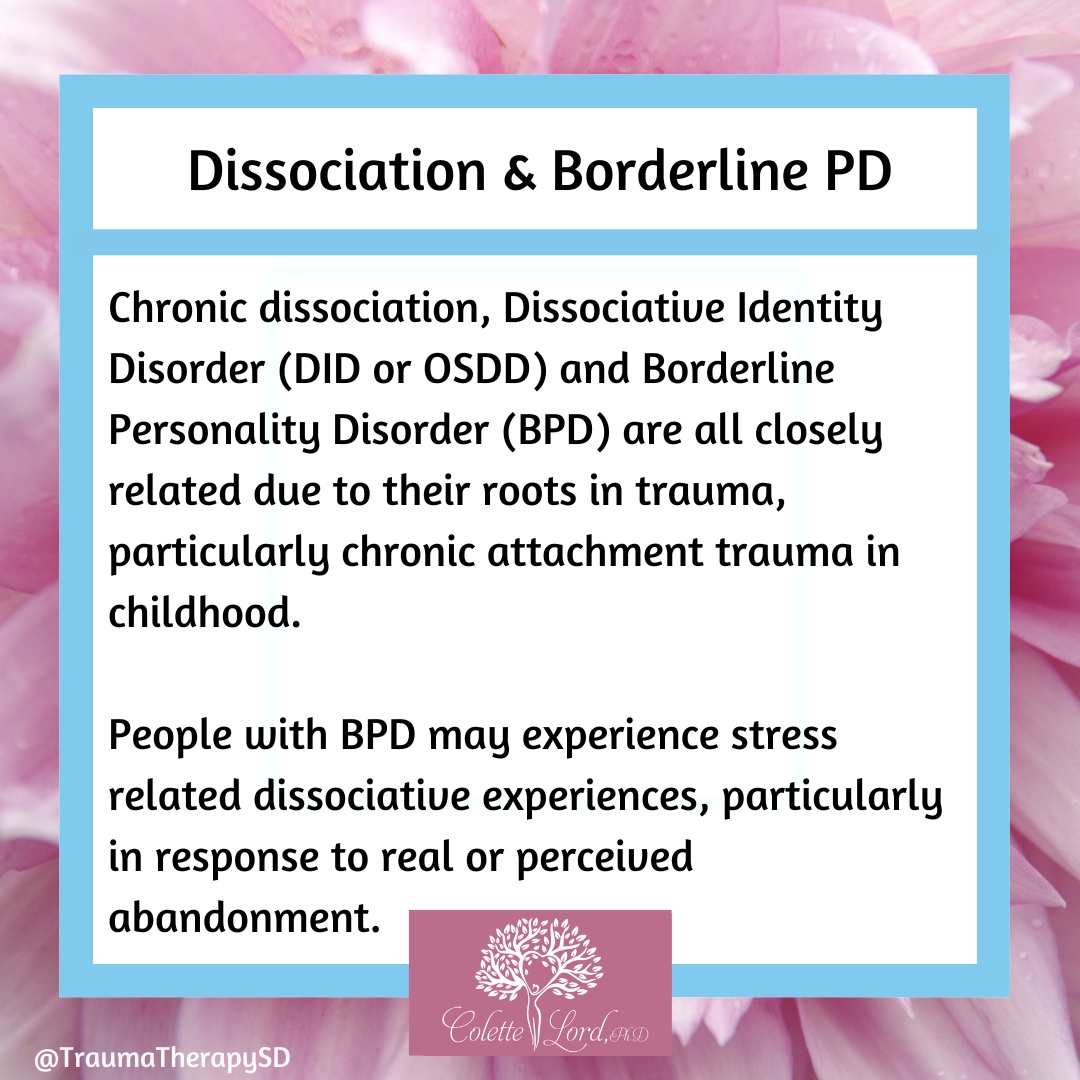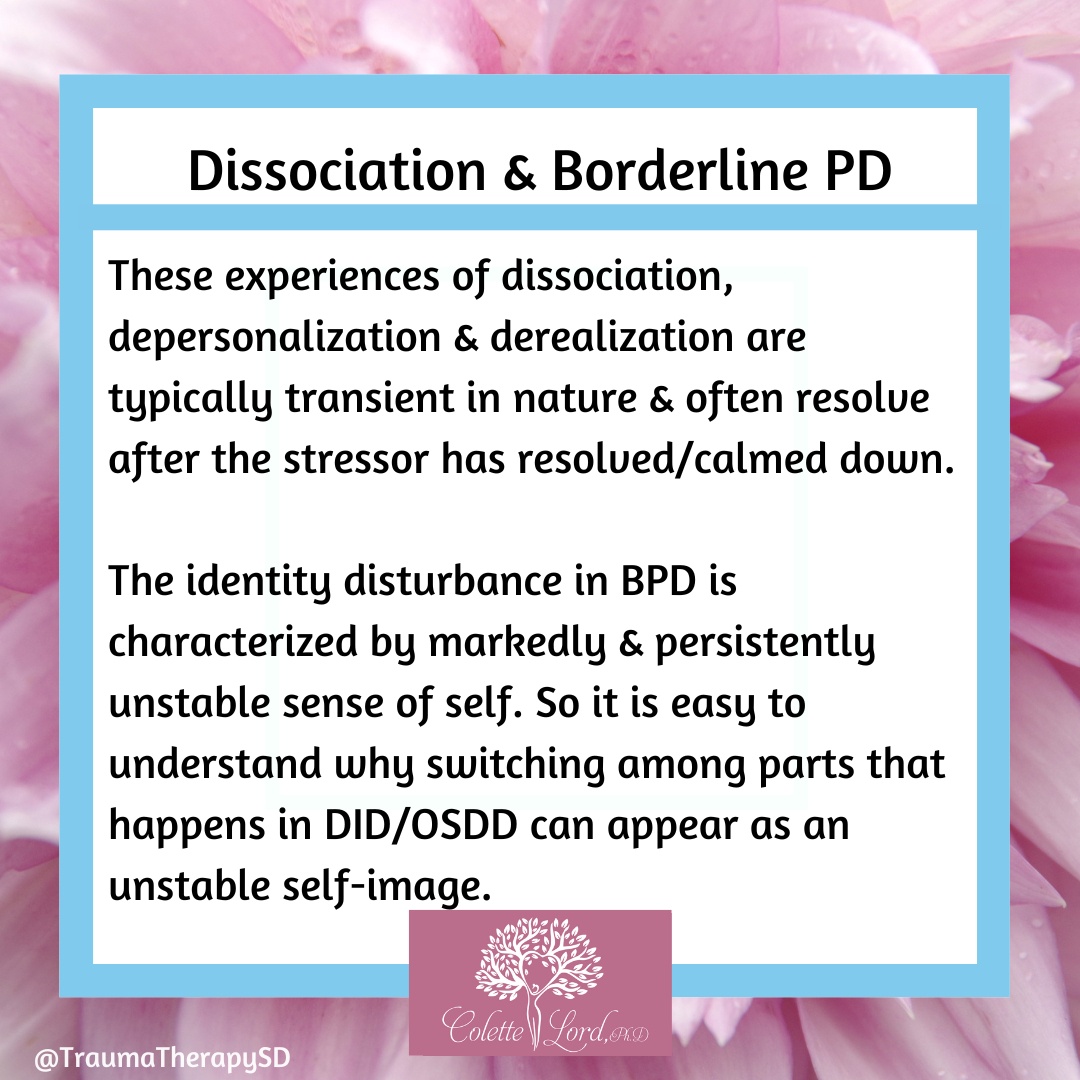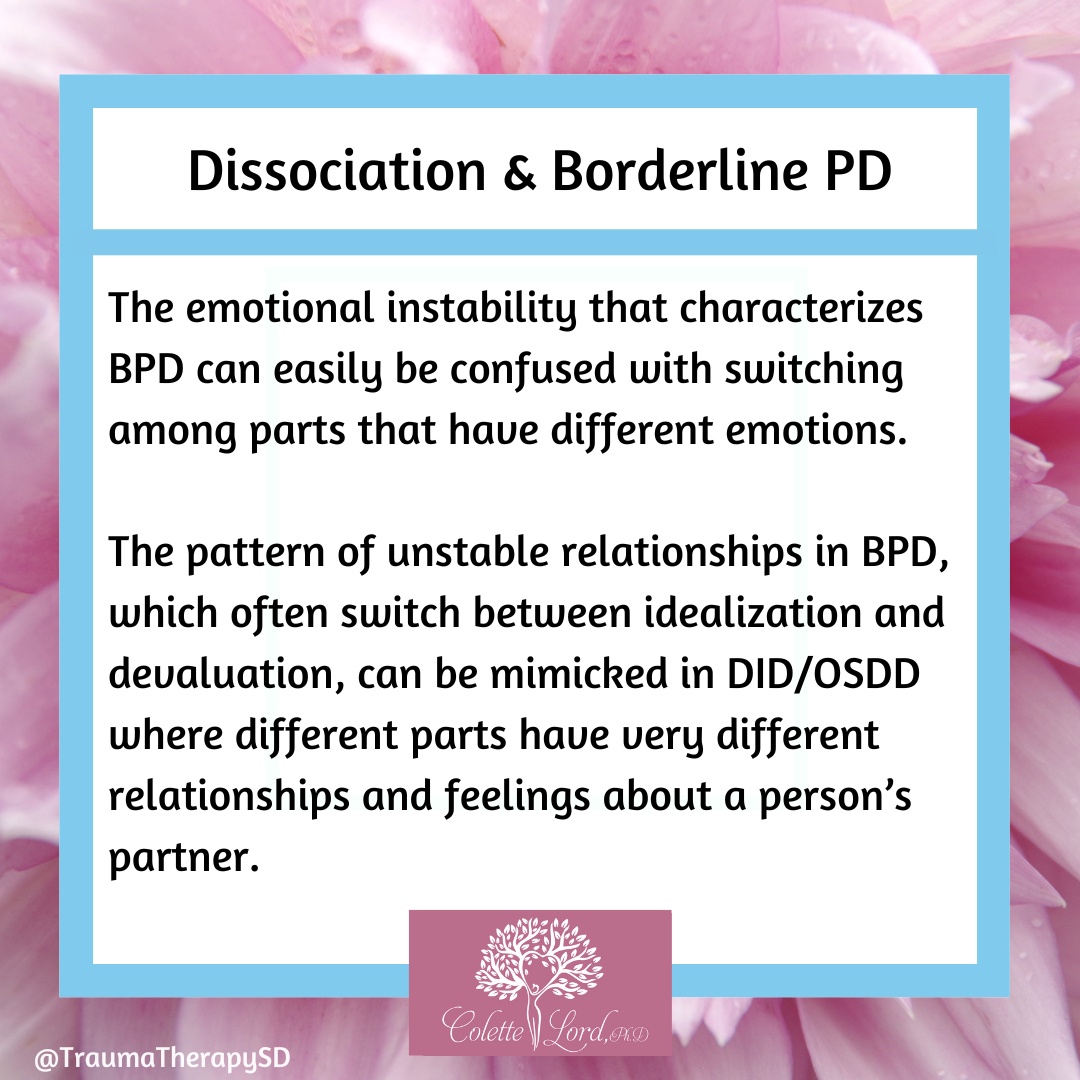Dissociation and Borderline Personality Disorder



Chronic dissociation, Dissociative Identity Disorder (DID or OSDD) and Borderline Personality Disorder (BPD) are all closely related due to their roots in trauma, particularly chronic attachment trauma in childhood.
People with BPD may experience stress related dissociative experiences, particularly in response to real or perceived abandonment.
These experiences of dissociation, depersonalization and derealization are typically transient in nature and often resolve after the stressor has resolved or calmed down.
The identity disturbance in BPD is characterized by markedly and persistently unstable self-image or sense of self. So it is easy to understand why switching among parts that happens in DID/OSDD can appear as an unstable self-image.
The emotional instability that characterizes BPD can easily be confused with switching among parts that have different emotions.
The pattern of unstable relationships in BPD, which often switch between idealization and devaluation, can be mimicked in DID/OSDD where different parts have very different relationships and feelings about a person’s partner.










